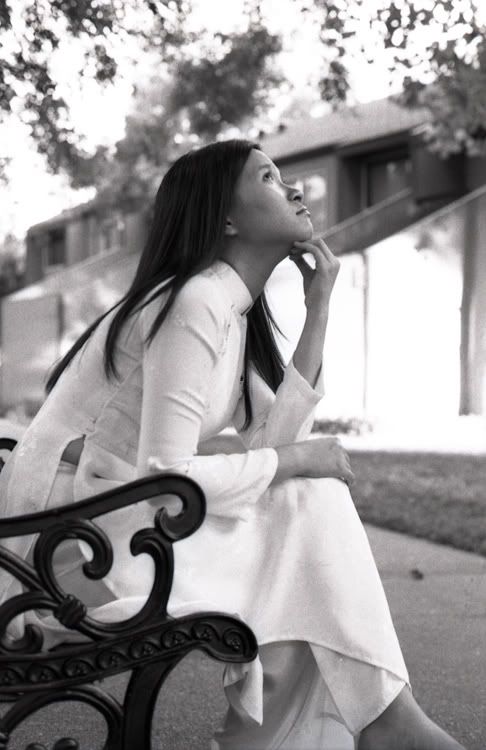
It is hard to believe that one day I would find ao dai to be a subject of cultural nostalgia. As mentioned in the article "ao dai revival" by Prof. Valverde, many Vietnamese communities abroad see ao dai as "a symbol of history and cultural preservation." It is rather ironically that many of my female friends from Vietnam often speak of ao dai now that they do not have to wear it anymore.
 It is undeniable that ao dai is an integral part of Vietnamese culture. However, as ao dai being recognized across the globe, I fear that it would become too attached to the image of a Vietnamese woman that it would overshadow the real, flesh and blood human being behind the dress. It certainly is a good thing to preserve one's culture, but would it be considered going overboard to idolize the dress? It seems like nowadays, stewardesses, office workers, teachers, and women in other professions only wear ao dai as a way to achieve the "desired look" of fitting forms and attractive postures. Moreover, with the regular ao dai pageants and fashion shows, ao dai climbs to a higher level, almost reaching a haut couture status (at least in my opinion). What if someday ao dai becomes a commodity (it already is for the Vietnamese communities)? Would it be mass produced with the expensive fabrics of silk or brocade? Certainly there are already differences in the quality (both in the complexity of the design and the type of fabrics) of an ao dai worn by a working class woman and one worn by celebrities or the upper class.
It is undeniable that ao dai is an integral part of Vietnamese culture. However, as ao dai being recognized across the globe, I fear that it would become too attached to the image of a Vietnamese woman that it would overshadow the real, flesh and blood human being behind the dress. It certainly is a good thing to preserve one's culture, but would it be considered going overboard to idolize the dress? It seems like nowadays, stewardesses, office workers, teachers, and women in other professions only wear ao dai as a way to achieve the "desired look" of fitting forms and attractive postures. Moreover, with the regular ao dai pageants and fashion shows, ao dai climbs to a higher level, almost reaching a haut couture status (at least in my opinion). What if someday ao dai becomes a commodity (it already is for the Vietnamese communities)? Would it be mass produced with the expensive fabrics of silk or brocade? Certainly there are already differences in the quality (both in the complexity of the design and the type of fabrics) of an ao dai worn by a working class woman and one worn by celebrities or the upper class.What would be left of ao dai if it becomes a commodity internationally?
Blog #2
by Nghia Trinh
Sources:
Hoodfar, Homa. "More than Clothing."
Valverde, Kieu Link Caroline, "ao dai revival."
First photo by me.
Second photo at this website
No comments:
Post a Comment